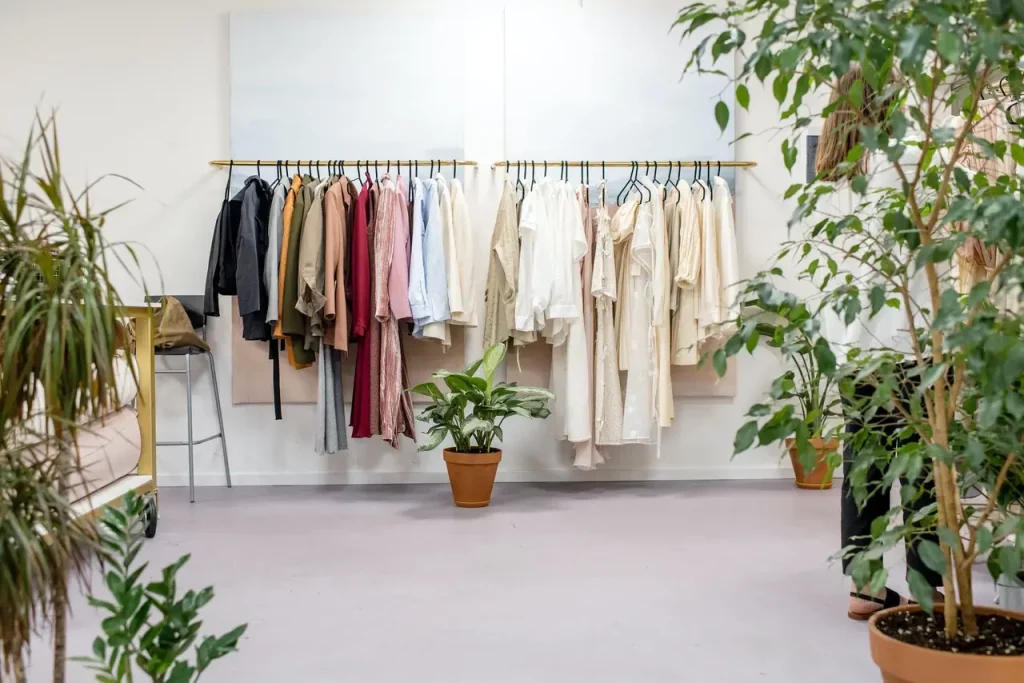The advent of fast fashion began all the way back in the Industrial Revolution. Thanks to the advances in manufacturing and the abundance of labor, clothing no longer needed to be made painstakingly by hand. People could now buy ready-to-wear clothes from shops without waiting for weeks or even months.
Over the decades, fast fashion companies went into overdrive as the world population and demand for clothing increased. Where once fashion trends persisted for decades, clothing could be in vogue for a few years before being labeled as outdated. Today, multiple fashion trends can come and go within a single year.
Because of rampant consumerism, Americans are now some of the most wasteful when it comes to clothing. Experts claim that the average American will throw away over 81 pounds of clothing every year. Making and getting rid of these clothes exacts a heavy toll on the environment, from chemical to physical pollution.
So how can you help mitigate the devastating effects of fast fashion?
Begin with the following 5 steps.
-
Avoid Trends

Fashion trends have become increasingly ephemeral. Where once silhouettes and materials could persist for an entire decade, the rapid demand for newer designs and fresh pieces means that something highly fashionable six months ago can be seen as lame today. This also means that millions of articles of clothing are suddenly labeled unappealing and end up discarded.
If you want to avoid falling prey to this mindset, you will do well to avoid pandering to trends. Remember that staying trending is not just financially expensive, it also extracts a toll on the planet. Instead of chasing every fashion trend, why not build your own clothing identity that doesn’t rely on fads?
-
Repurpose Clothing
When a piece of clothing has run its course, you don’t have to immediately dump it in the nearest trash can. You can always upscale or repurpose your old clothes so that you can extract as much use from them as possible. There are all sorts of creative ways you can repurpose old clothing.
For example, a t-shirt can be cut and stitched carefully to become a new cloth grocery bag for shopping. Jeans you have outgrown can be reconfigured and sewn to become jean jackets.
Explore the different creative ways you can use to ensure your clothing doesn’t just end up in the trash.
-
Save Up

An unfortunate reality is that the clothing available in fast fashion shops are often made quickly and cheaply to be cost-effective. This can mean they won’t last as long as pieces made with more expensive processes.
If you want clothing that will last years instead of fall apart at the least provocation, you may have to save up considerably.
For example, cheap shoes can be easy to buy due to low cost but if you have to keep buying a new pair every year because of how fast they fall apart, you are operating at a loss.
But sturdy and well-made shoes that cost more can remain useful in the same span and cost you nothing. Saving up for quality pieces is a great way to avoid the fast fashion trap and acquire clothing that can last for years.
-
Turn to Thrift Stores
One of the best ways you can curb the effects of fast fashion is by turning to the many thrift stores in the country. Thrift stores are businesses that sell pre-owned clothing at reduced prices. These establishments help mitigate fast fashion through many ways.
First, you can avoid buying from fast fashion shops by just patronizing a thrift store. Odds are you will find clothing that were in trend in the racks and for much cheaper prices. Second, they allow old or used clothes to be used once again, avoiding consignment to the nearest landfill and helping prevent waste. Finally, you can always take your own old clothes to a thrift shop and sell them there. This helps you keep your clothing in circulation and give you some finances.
For all these reasons and more, thrift stores are some of the most effective places for countering fast fashion’s rapacious expansion.
-
Learn Sewing

Finally, you can learn how to sew and cut down on your consumption yourself. If you throw away clothing because they are ruined or you outgrew them, skills in sewing can be essential in reducing costs.
For example, you won’t have to buy a new pair of jeans if the seam split if you have the necessary skills to sew up the seam yourself.
Pants, shirts and other clothing can be let out or expanded if they are no longer fit to your size. New pieces of clothing can be created from the scraps of old clothes with enough effort. Learning how to sew used to be an indispensable skill and relearning it can show you how much cheaper and eco-friendly your closet can be.
Fast fashion isn’t the most environmentally devastating industry, but its cost on the planet can be easily curbed. Use these methods to make your closet more eco-friendly and efficient.

